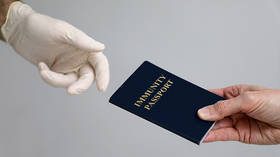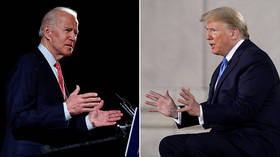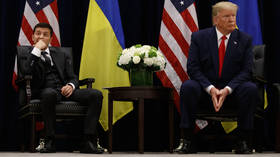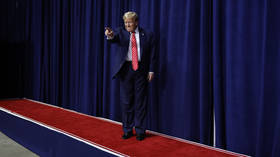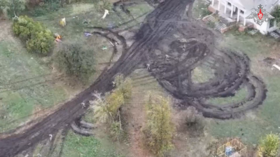Deadly US policy on Covid-19 will split the world in two and force countries to rethink old alliances

The Donald Trump administration’s failure to take the coronavirus seriously won’t only cause thousands of unnecessary deaths, it could change the global political map for good.
The US is now a deadly threat to every person on the planet – that is the inevitable result of Washington’s decision to lift even its very limited lockdown despite the fact the virus continues to rage with full force within the American borders.
Domestically, this will mean the death of tens of thousands more Americans, creating a casualty toll on US soil comparable only to the 1918 Spanish flu epidemic and the Civil War. But the international consequences will see the world divided into two zones.
The first, centred on Asia and the Western Pacific, including Australia and New Zealand, has essentially brought the coronavirus under control. But the second zone, centred on the US, with a few countries such as Brazil, Sweden and the UK in alignment, has in essence lifted any serious attempt to stop the coronavirus’ transmission.
Although some US states and cities are strongly resisting the administration’s course, they are not as powerful as the federal government. US federal policy will now essentially allow the coronavirus to spread without effective control until the November presidential election, which will provide the opportunity to remove the present administration.
The global situation is shown most clearly by the per capita death rate. At the time of writing, the data shows that most Asian/West Pacific countries have succeeded in eradicating or suppressing the virus – the average number of daily deaths per million in China is zero, in South Korea 0.01, in Australia 0.01, in New Zealand 0.03. Meanwhile, in the US it’s 5.07 and the UK has 7.01 deaths per million.
Also on rt.com As the US and China fight over Covid-19 and prepare for a new trade war, India swoops in for the last laughDifferent strategies, different outcomes
These facts demonstrate that two completely incompatible strategies for dealing with the coronavirus are being pursued.
The first, in Asia, the Western Pacific and parts of Eastern Europe may be termed an ‘eradication strategy’ – using sharp lockdowns or ‘lockouts’ (preventing the virus entering the country) to drive the number of Covid-19 cases down to essentially zero or close to zero. The success of that strategy, demonstrated in the data, shows conclusively that at least in developed countries, any attempt to claim that the coronavirus cannot be essentially eradicated is false.
The second approach, being followed most clearly by the US administration, is to allow the coronavirus to spread through the population without effective control, meaning hundreds of thousands of deaths.
Almost no government dares openly speak anymore of the ‘herd immunity’ strategy which was originally pursued in Britain, because of public revulsion against the enormous number of deaths it involves. But in reality, this remains the policy being pursued in the US and a few other countries such as Brazil, Sweden and the UK – as no genuinely effective measures to bring the virus fully under control are being realistically pursued.
A world split in two
But there is an inevitable result of the world being divided into a ‘healthy/clean’ zone in Asia/West Pacific and some East European countries, and an ‘unhealthy/disease ridden’ zone in the US and parts of Western Europe.
These two zones are, of course, interconnected on a single planet. And that means every aircraft or ship from the US will be a deadly threat to the population of any country in which it arrives. Asian/West Pacific countries now face the very real possibility of infection of the virus from the US, and any other parts of the world outside these two zones face a life and death choice within a few weeks. The main global mechanism of coronavirus transmission has been air transport. This is rapid, but expensive in comparative international terms. As a consequence, the worst hit regions initially were China, where the outbreak began and which is a relatively advanced developing country, or the developed countries themselves – Western Europe and the US.
Less developed countries – in Africa, most of Latin America, and parts of Eastern Europe – which are not so intensively interconnected by air, are only now realising the devastating potential of the virus. So far in most countries in these regions the number of cases and deaths per capita is still low – not much higher than Asia/Western Pacific. Will these countries therefore remain aligned with the healthy/low death regions of Asia/Western Pacific, or will they be dragged into the unhealthy high death zone of the US?
This choice has major geopolitical and domestic political consequences. Until now, countries which internationally aligned themselves with the US were accustomed to being threatened with economic pressure. For example, the US has attempted to force Germany to abandon the Nord Stream 2 gas pipeline from Russia, despite it offering the lowest-cost power supplies to the country. The US has also attempted to persuade every nation not to use China’s Huawei in the development of a 5G telecommunications system, with very little success so far.
US is a centre of disease
But now governments across the world are faced with the US as a centre of disease threatening the health of their country. There is also the prospect of the Americans resisting measures to block transport from the US which threatens to spread the virus.
The implications are not only medical, but political. Any government failing to get coronavirus under control, due to US pressure, faces the threat of being destabilised by the social consequences. The emergence of the US as the main coronavirus disease centre in the world will therefore politically affect every country.
Domestically, the US will pass its judgement on the administration’s handling of the coronavirus crisis in the presidential election. The impact of the virus on the American politics will be huge. It is not simply an issue of the tens of thousands more Americans who are now certain to die. The virus is spreading from its initial centres in big cities into smaller towns and rural areas. It will affect millions of Americans since every trip to the supermarket will be a potentially life-threatening experience.
There will also be a stark effect on the global economy. The US is already entering its biggest recession since the Great Depression. But because Asian/West Pacific countries have brought the virus under control, they can begin to relaunch their economies.
Also on rt.com Welcome to the post-Covid future: Face masks, elbow bumps, and the end of freedomThis has been noted not only in China, but by mainline Western research bodies. The Economist Intelligence Unit wrote in its recent report on coronavirus: “China, by virtue of being the first to emerge from the crisis, will be the first on the road to recovery… China and other fast-growing economies in Asia are likely to experience a faster recovery based on their underlying advantages in terms of strong investment, innovation and productivity growth. The pandemic is therefore likely to accelerate the rebalancing of global economic power from the West to the East in coming years.”
These global economic and geopolitical changes brought by the coronavirus will be profound. But even before they unfold, every country in the coming days and weeks faces a choice which will radically affect its future.
The US administration has embarked on a course certain to unleash mass deaths domestically and turn the country into the global centre of the pandemic. Its citizens will decide if they accept this course later this year. But the bigger question is whether it will be permitted to infect the entire world.
Think your friends would be interested? Share this story!
The statements, views and opinions expressed in this column are solely those of the author and do not necessarily represent those of RT.
